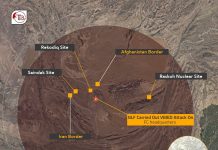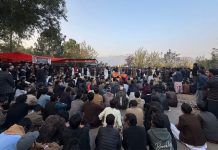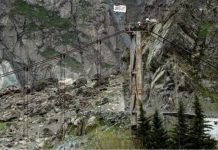The Baloch Coast and Saudi interests
Writer: Reyasat Khan Baloch
Divided among Iran, Afghanistan and Pakistan, the Baloch people lack a state of their own. In 1839, The English army invaded and occupied the sovereign state of Balochistan, from the day next to this invasion and occupation and so on the English rulers faced several waves of uprisings and militancy in different parts of Balochistan. Having a large land mass and largely being mismanaged, it was impossible for the Britishers to rule Balochistan with ease.
So, the Britishers divided The Baloch territory into 3 different parts. The basic purpose behind this division was to maintain stability, controlling and managing the area properly and to crush the local resistance, which were bothering Britishers time and again.
A question comes in mind that what was the actual reason behind Britain’s concern over a region with no markets for business and industries where they could do business or have their colonial interests.
And answer to this question is simple, The English wanted security for one of their important colony “India”, basically, which could only be threatened if a party may had controlled the Indian ocean, and for doing that the Coast of Balochistan was the easiest route one could use.
After many years of the British withdrawal from the region, much seem to have changed, from the military and political to the economic dynamics, everything has changed but not the fate of the people living across Balochistan.
Balochistan still remains a gateway to the Indian Ocean, controlling the warm waters of Balochistan means controlling the business and markets of Central Asia and the Gulf countries. Controlling the strait of Hormuz and regulating the whole trade done in the region and this is what The Bejing wants, for the last two decades the Bejing has come forward as an active and a key player to have a share of all this.
China wants to expand its business and wants to have easy access to the big but untouched markets of Asia and Europe and for them, the easiest way is through Balochistan.
China has recently unleashed its biggest project ever “One belt One road” through which China hopes to rebuild the ancient silk route for trading purposes and The CPEC (China Pakistan Economic Corridor) being its core component.
Besides the trade objectives, there are military objectives too linked with China Pakistan economic corridor, China if succeeds in building the CPEC, it will pose a permanent threat to the western and Indian interests in the region.
But for the last few months, Saudi Arabia has also joined hands with China and Pakistan in investing in CPEC projects. A few days ago some Saudi officials visited the port city of Gwadar (the main port for CPEC) uttering to be interested in investing.
Saudi Arabia has a long presence in the region by arming its Islamic proxies such as Jaish ul Adal and others but by being in CPEC Saudi wants its military presence to counter its arch-rival, Iran.
Just as India, west and Iran, the local Baloch population fears its dangerous implications on them as well, the Baloch considers the Pakistani presence in Balochistan as illegitimate as they claim Pakistan an occupier.
The Baloch nationalists are unhappy with China investing in their historic homeland without their consent and fear a demographic change which grows stronger with each passing day.
The recent attacks on Chinese interests within Balochistan and in Karachi by Baloch insurgents are a clear indication by the nationalists that they would use everything they have to counter the Chinese designs and plans in the region, and of course, Saudi will be a target too if it persisted to invest.





























